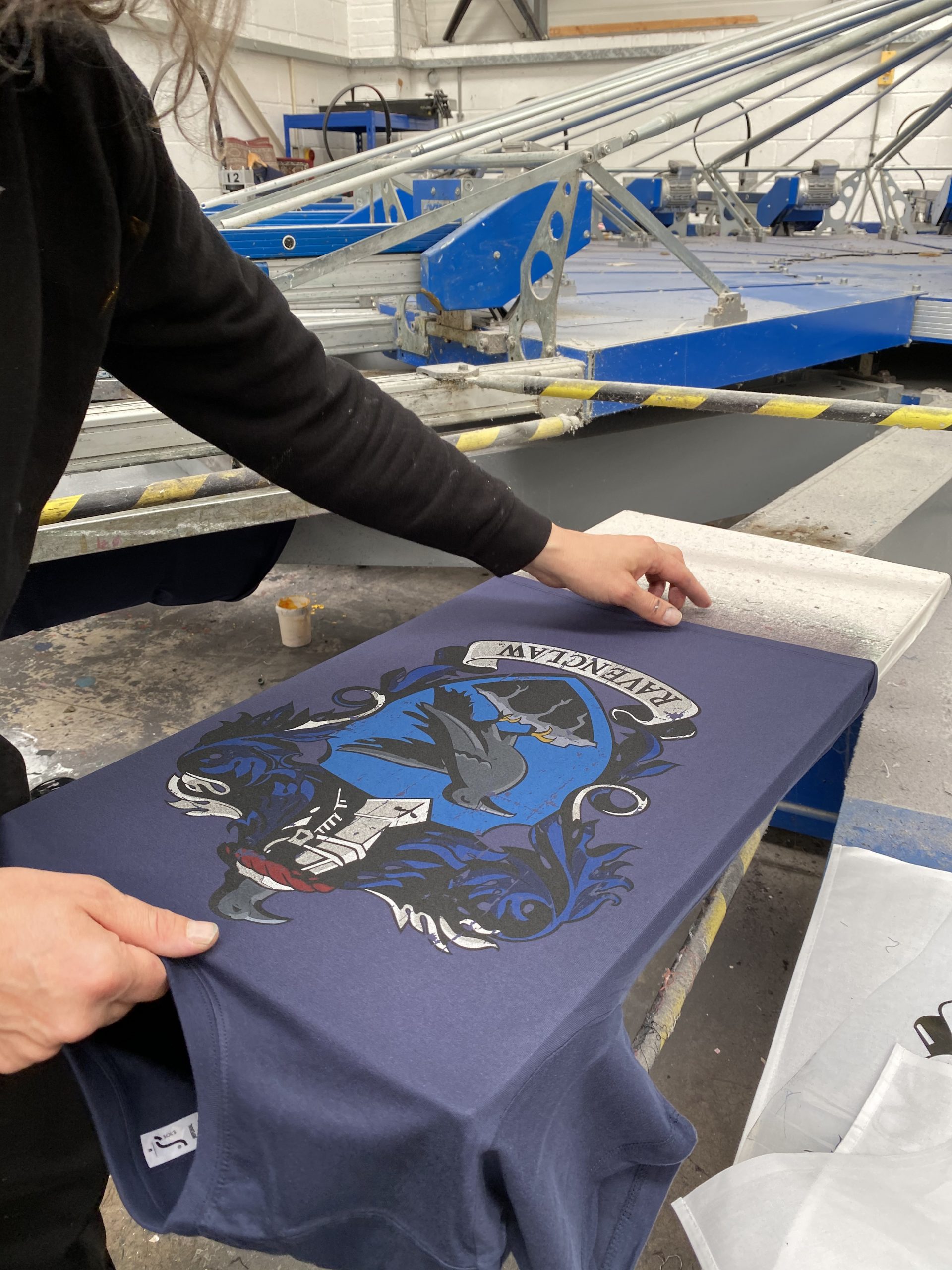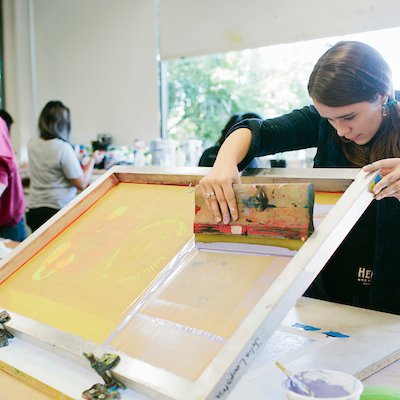The Essential Overview to Recognizing Screen Printing and Its Versatile Uses
Screen printing has a rich background that dates back to old times, advancing into an advanced technique used across different markets today. This overview discovers the complexities of the screen printing procedure, describing its applications in fashion, advertising and marketing, and home décor - 10:9 Design reviews. Recognizing these principles can open innovative potential for both imaginative and commercial jobs. The complying with sections will disclose vital ideas and methods to improve one's screen printing undertakings
The Background of Screen Printing
Although screen printing has roots that map back centuries, its development shows the technological and artistic developments of various societies. Stemming in ancient China, the strategy was at first used for embellishing textiles and later spread to Japan, where it came to be integral to Ukiyo-e woodblock printing. The method moved to Europe in the 18th century, where it got popularity amongst craftsmens and commercial printers. The innovation of picture solution in the 20th century reinvented screen printing, permitting more elaborate styles and greater effectiveness. Artists like Andy Warhol better drove its popularity, making use of the tool to create legendary jobs that combined commercialism and art. By the late 20th century, screen printing had established itself as a functional technique, employed in fashion, advertising, and art. Today, it continues to progress, integrating electronic modern technology and expanding its applications across various industries.
The Screen Printing Process Explained
Screen printing transforms creative visions into concrete styles through a collection of specific steps. At first, a picture is created and afterwards moved onto a screen, usually made from great mesh textile stretched over a structure. A light-sensitive solution is put on the screen, which is exposed to light, hardening in areas not covered by the picture. After cleaning out the unhardened solution, a stencil is formed.
Next, the screen is placed over the substrate, whether it be fabric, paper, or one more product. Ink is then pressed with the open areas of the pattern making use of a squeegee, transferring the style onto the substratum listed below. This process can be duplicated for numerous colors, calling for separate displays for each and every shade. The published item is healed utilizing warm to guarantee the ink sticks properly, resulting in a long lasting, lively style all set for usage.
Kinds Of Screen Printing Techniques

Furthermore, specialty methods, such as discharge screen printing, get rid of dye from the fabric to create softer prints, while aluminum foil screen printing applies metallic foil to attain a shiny coating (10:9 Design Screen Printing Texas). Each strategy uses distinct characteristics, catering to numerous creative requirements and manufacturing scales, ultimately broadening the possibilities within the screen printing domain
Applications of Screen Printing in Different Industries

Furthermore, the signs and advertising and marketing markets use screen printing for creating captivating screens and banners. This approach enables bold shades and intricate styles that catch interest. In electronic devices, screen printing is used for using conductive inks to circuit card, vital for component connections. The home style market welcomes screen printing to generate unique layouts on fabrics and wall surface art. Generally, screen printing acts as an essential tool throughout diverse fields, improving items with customized and aesthetically appealing graphics.
Tips for Successful Screen Printing Projects
While embarking on a screen printing job, careful focus to detail can substantially enhance the last outcome. Selecting high-quality products is essential; this consists of the screen, inks, and substrates. Using appropriate mesh counts can influence ink deposition and detail resolution. Preparation is just as vital; comprehensive cleansing of screens and proper exposure times assure crisp prints.
Next off, accurate registration is critical for multi-color prints. Making use of positioning devices can help accomplish accurate layering. In addition, screening prints on scrap materials prior to production helps recognize potential issues without losing resources.

Often Asked Questions
What Products Are Best for Screen Printing on Material?
Cotton and polyester blends are optimal for screen printing on textile because of their sturdiness and ink absorption. Additionally, specialized fabrics like silk or canvas can generate one-of-a-kind appearances and surfaces, enhancing the overall layout top quality.
How Do I Clean and Maintain Screen Printing Tools?
To preserve and cleanse screen printing equipment, one should routinely clean displays with proper solvents, examine mops for wear, lubricate moving components, and store all items in a completely dry, dust-free atmosphere to extend their life-span.
What Are the Ecological Effects of Screen Printing?
Screen printing can have considerable ecological influences, consisting of chemical waste from solvents and inks, water use during cleansing procedures, and energy intake. Environment-friendly products and lasting techniques are important for lessening these unfavorable impacts.
Can Screen Printing Be Done at Home Successfully?
Screen printing can be successfully done at home with the ideal products and techniques. Hobbyists can create quality prints, though success depends on their ability level, tools, and understanding of the process involved.
What Are the Expenses Associated With Beginning a Screen Printing Organization?

Beginning a screen printing company includes prices for tools, products, and work space. First costs generally range from a couple of hundred to a number of thousand bucks, depending on the scale, high quality of machinery, and desired manufacturing ability.
Screen printing has an abundant background that dates back to ancient times, developing right into an innovative technique used across various sectors today. An additional technique, rotary screen printing, utilizes round displays, helping with constant printing on fabric rolls, therefore improving effectiveness for massive productions. Furthermore, specialty techniques, such as discharge screen printing, eliminate color from the material to produce softer prints, while foil screen printing uses metallic foil to achieve a shiny finish. In the fashion industry, screen printing is widely utilized to develop vivid designs on garments, making it possible for brands to showcase their unique designs. Cotton and polyester blends are suitable for screen printing on fabric due to their sturdiness and ink absorption.